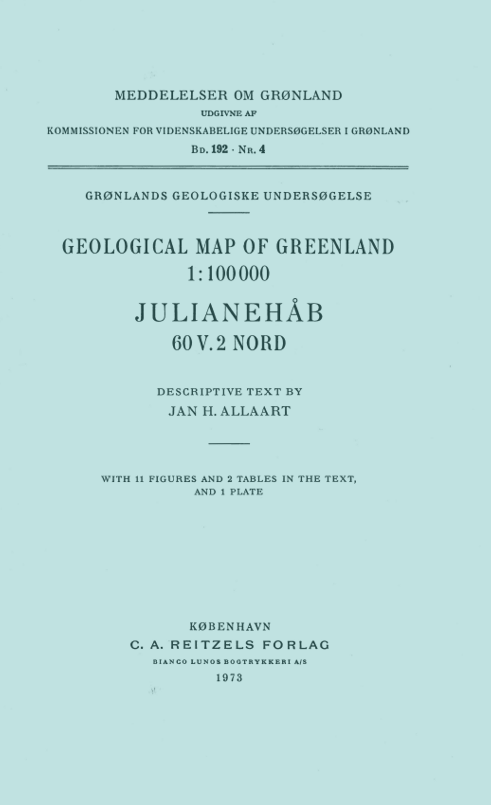Geological Map of Greenland 1 : 1000.000, Julianehåb 60 V.2 Nord.
DOI:
https://doi.org/10.7146/mog.v192.150069Abstract
The oldest rocks are metasediments, metavolcanics, gneisses and gneissose granites and they occupy about 15 % of the map area. Their age is unknown. They are extensively broken up by a complex of granitic rocks collectively called the Julianehab granite which occupies about 80 % of the map area. This granite complex developed by a combination of intrusion and reactivation of existing granitic gneisses (during late Early Proterozoic time) before 1750 m.y. ago. Subsequently the area was uplifted and subjected to erosion and faulting accompanied by the accumulation of 3000 m of sandstones, and basalt and trachytic lavas. They were intruded by alkaline dykes and intrusive centres of which Ilimaussaq is the most famous. These unmetamorphosed supracrustal and alkaline intrusive rocks occupy 5 "lo of the area and are of Late Proterozoic (Gardar) age.

Downloads
Published
How to Cite
Issue
Section
License
Coypyright by the authors and the Commision for Scientific Research in Greenland. No parts of the publications may be reproduced in any form without the written permission by the copyright owners.

